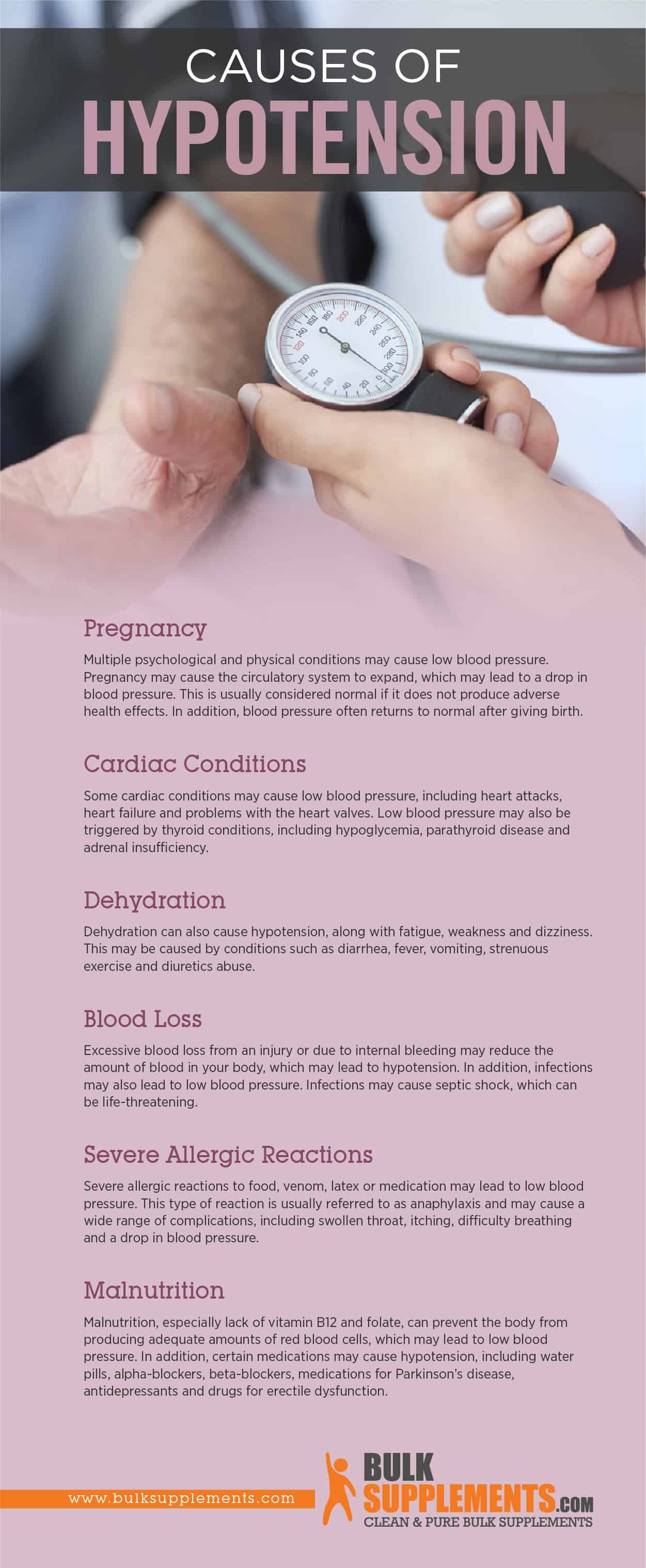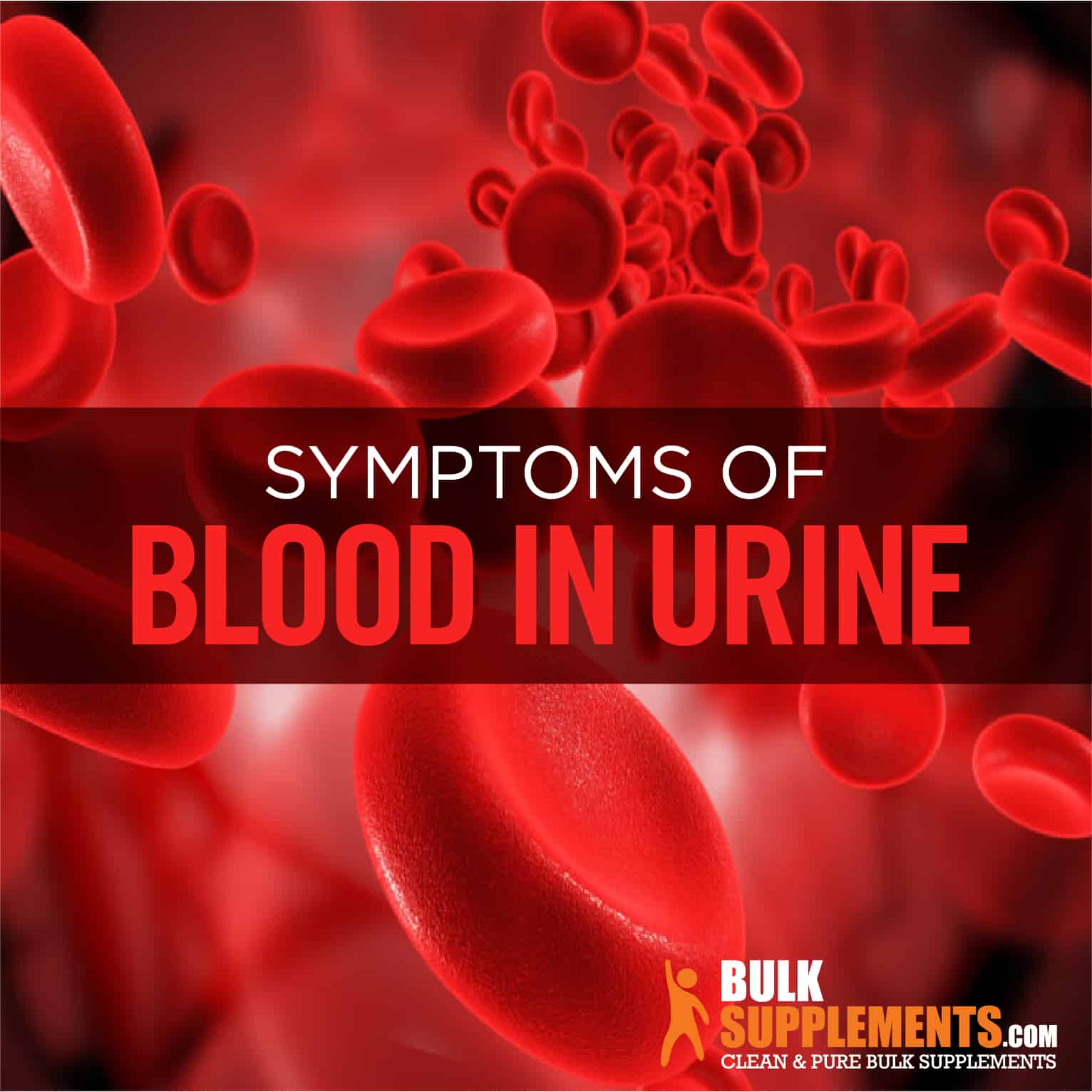Low Blood Pressure (Hypotension): Symptoms, Causes & Treatment

Hypotension
What is Hypotension?
Hypotension is the medical term for low blood pressure. Blood pressure readings usually appear as two numbers. The first one is usually higher than the second one and provides readings of systolic pressure — the arterial blood pressure as the heart beats. The second number provides readings of diastolic pressure — the pressure in the heart as it rests between beats. Low blood pressure is defined as a measurement that is less than 90/60.
In some people, low blood pressure does not produce any symptoms and is usually not a cause for concern. However, the condition may also be a sign of an underlying health problem. Low blood pressure in older people should be a cause for concern as it may lead to inadequate blood flow to vital organs, including the brain and heart.
Chronic low blood pressure may not be a cause for concern if it does not produce any symptoms. However, it may cause serious health problems when it drops suddenly and deprives the brain of vital oxygen supply. This condition may cause lightheadedness and dizziness, especially if you rise abruptly from a prone or sitting position.
There are many types of low blood pressure, including orthostatic (postural) hypotension, vasovagal syncope and neurally mediated hypotension. Like high blood pressure, the risks associated with low blood pressure often increase with age, mainly due to the changes that occur as people age.
Types of Hypotension
There are different types of hypotension, each with its own causes and symptoms. The four main types of low blood pressure include the following.
Chronic Hypotension
Chronic asymptomatic hypotension may cause constant low blood pressure. However, people with this condition often lead healthy lives without experiencing any adverse symptoms.
Orthostatic Hypotension
Orthostatic hypotension occurs when one stands up suddenly from a sitting or prone position. It is caused by the body’s inability to adjust the blood pressure after the change in position.
Although orthostatic hypotension may occur in anyone, it is more common among the elderly. This type of hypotension may be a sign of an underlying symptom such as dehydration, anemia or cardiovascular disorder. Some medications may also increase the risk of experiencing this type of low blood pressure.
Postprandial Hypotension
Related to orthostatic hypotension, postprandial hypotension usually occurs after meals. It is more prevalent among older people and may be a sign of an underlying condition, including Parkinson’s disease and high blood pressure.
Neurally Mediated Hypotension
Neurally mediated hypotension usually occurs after a period of prolonged standing. In some cases, neutrally mediated hypotension may occur before or after a frightening or unpleasant situation. This low blood pressure type occurs when there is a disconnect in communication between the brain and the heart. Children and young adults are more susceptible to NMH.
Severe Hypotension
Severe hypotension occurs when blood pressure drops so low that the blood that organs receive is too low to support normal functions. This is one of the leading causes of stroke, which may be caused by various factors including severe diarrhea, kidney disease and internal or external bleeding.
Hypotension Symptoms
General Symptoms
There are many signs of hypotension including blurred vision, nausea, lightheadedness and fatigue.
Indicator Symptoms
Some low blood pressure symptoms may be indicators of underlying health complications. These signs include fainting, lack of concentration, fatigue and shock. If you are experiencing these symptoms, it could mean that you have hypotension as well as an underlying issue.
Severe Symptoms
Chronic hypotension can cause several symptoms which are indicative of a severe problem. Rapid or shallow breathing in addition to a weak or rapid pulse, cold and clammy skin and confusion are all indicators that your chronic hypotension is severe.
When to See a Doctor
If you have signs of shock, seek immediate medical attention. However, if you have constant low blood pressure, but you feel fine, see a physician to discuss how to manage the condition. It is relatively normal to feel lightheaded or dizzy occasionally. However, if the symptoms persist, they could indicate serious underlying problems.
Causes of Hypotension
Pregnancy
Multiple psychological and physical conditions may cause low blood pressure. Pregnancy may cause the circulatory system to expand, which may lead to a drop in blood pressure. This is usually considered normal if it does not produce adverse health effects. In addition, blood pressure often returns to normal after giving birth.
Cardiac Conditions
Some cardiac conditions may cause low blood pressure, including heart attacks, heart failure and problems with the heart valves. Low blood pressure may also be triggered by thyroid conditions, including hypoglycemia, parathyroid disease and adrenal insufficiency.
Dehydration
Dehydration can also cause hypotension, along with fatigue, weakness and dizziness. This may be caused by conditions such as diarrhea, fever, vomiting, strenuous exercise and diuretics abuse.
Blood Loss
Excessive blood loss from an injury or due to internal bleeding may reduce the amount of blood in your body, which may lead to hypotension. In addition, infections may also lead to low blood pressure. Infections may cause septic shock, which can be life-threatening.
Severe Allergic Reactions
Severe allergic reactions to food, venom, latex or medication may lead to low blood pressure. This type of reaction is usually referred to as anaphylaxis and may cause a wide range of complications, including swollen throat, itching, difficulty breathing and a drop in blood pressure.
Malnutrition
Malnutrition, especially lack of vitamin B12 and folate, can prevent the body from producing adequate amounts of red blood cells, which may lead to low blood pressure. In addition, certain medications may cause hypotension, including water pills, alpha-blockers, beta-blockers, medications for Parkinson’s disease, antidepressants and drugs for erectile dysfunction.

Risk Factors for Hypotension
Anyone can get low blood pressure. However, certain factors increase the risk of having the condition.
The elderly are at higher risk for postural hypotension. On the other hand, neutrally mediated hypotension occurs most often among children and young adults.
In addition, some medications, including alpha-blockers and diuretics, increase the risk of low blood pressure.
SEE ALSO

Blood in Urine Symptoms, Causes and Treatment
Diseases such as Parkinson’s disease and diabetes can also put you at risk of having low blood pressure.
Hypotension Diagnosis
Low blood pressure diagnosis often involves the use of a sphygmomanometer, the standard device for measuring blood pressure. When using the device to measure blood pressure, it is essential to use the right cuff size because the wrong size may give inaccurate readings. Additional tests may be necessary to determine underlying causes of the condition, including anemia and hormonal imbalance.
Hypotension Treatment
Medical Treatment
Treatment for hypotension varies depending on the underlying cause of the condition. Doctors may prescribe medication for cardiac disorders, diabetes and infection.
Lifestyle Changes
Lifestyle changes can also help manage hypotension. Drink lots of water, especially if you are vomiting or suffering from diarrhea. In addition, take frequent breaks between work and avoid standing for prolonged periods. Also take steps to enjoy life and avoid situations that may cause emotional stress.
To avoid orthostatic hypotension, make a habit of standing slowly and gradually from a sitting position. In addition, avoid crossing your legs when sitting to lower the risk of orthostatic hypotension.
Supplements for Hypotension
Ginger
Ginger promotes gut and joint health and may minimize the risk of hypotension after meals. This supplement is obtained from the root of an herb that is known for its health benefits. The recommended dosage is 1,000 milligrams taken once per day with lots of water to prevent heartburn. Ginger root supplements do not contain soy, additives, corn, gluten, dairy or sugar. This supplement should be taken after consultation with a doctor if you are pregnant, breastfeeding, taking medications, or have allergies. In addition, stop using this product altogether if you experience any adverse reactions.
Vitamin C
Vitamin C is an essential nutrient that we obtain from food to maintain good health. This supplement is extremely useful in promoting cardiac and gut health. For the best results, take 1,000 milligrams once daily.
A notable benefit of this supplement is that it is non-toxic. Therefore, it does not cause any adverse side effects in the case of an overdose. However, consider lowering your intake in case you experience any harmful side effects such as vomiting and abdominal discomfort. In addition, consult a physician before taking this supplement if you are pregnant, breastfeeding or have any health condition.
Vitamin D
Vitamin D helps to regulate calcium levels in the body. In addition, it promotes bone and teeth health. It is a fat-soluble vitamin that can be taken with meals or as directed by a physician. Take 50mg of D3 (cholecalciferol) daily.
If you are thinking about using this supplement, consult a doctor if you have a history of tuberculosis or kidney disease. Vitamin D overdose may cause nausea, irregular heartbeat, weight loss, diarrhea, seizures, constipation and general weakness.
The Bottom Line
Hypotension (or low blood pressure) is a medical condition that may be caused by aging and underlying health complications. There are different types of hypotension, including postural, neurally mediated, chronic, and severe hypotension. Common symptoms of hypotension include nausea, lightheadedness, fatigue, and fainting in some cases. Hypotension can be life-threatening if not carefully managed and treated. Treatment for hypotension varies depending on the underlying medical condition that may be causing it.



